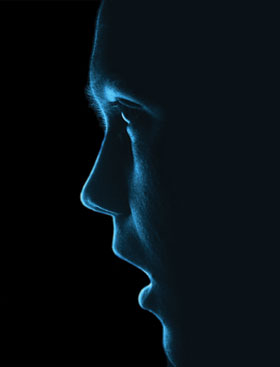

Improvements in camera technology combined with powerful algorithms have advanced the use of facial recognition in video surveillance. The human face plays a crucial role in our social interaction. It enables us to recognise people and gauge basic information about people we do not know such as age and gender.
Facial recognition has for many years been seen as the Holy Grail in the video analytics field, with many industry experts unconvinced of both its reliability and feasibility. This is understandable, as up until very recently real-world implementation of this technology had been problematic. Efforts to identify faces using facial recognition analytics were generally confounded by a number of factors such as differences in lighting and changes in facial angles.
However, the technology has made tremendous strides in the past few years and is now used in a variety of applications all over the world. For example, the Australian Customs Service has an automated border processing system that uses facial recognition technology which compares the face of the individual with the image in their e-passport microchip, confirming that the holder of the passport is the rightful owner. The Pennsylvania Justice Network uses the same technology to search crime scene photographs and CCTV footage in the mug-shot database of previous arrests. A number of cold cases have been resolved since the system became operational. The technology has even been used for a ride at Disney World. Spaceship Earth in Epcot uses a facial recognition system to place the riders’ faces on animated characters.
Improvements in network video
Novel technology and powerful new algorithms have facilitated a range of advances in facial recognition systems, which have led to improved accuracy in traditional applications – mostly in surveillance and security – and a host of new uses. Improvements in network camera technology and the versatility that comes from IP networks have also driven the update of this technology.
Today’s IP surveillance cameras have better resolution, higher frame rates and more capable lenses, all of which offer excellent images. In particular HDTV cameras give a guarantee of image resolution, contrast, colour fidelity and frame rate that complements the accuracy of facial recognition solutions making identification even simpler and more accurate.
Increased disc storage and new processing capabilities also mean that analysis of the footage has moved from the confines of the security control room onto laptops and mobile devices.
Additionally, improved wide dynamic range cameras now broaden the environments in which facial recognition technology can be used. In a scene with extremely bright and dark areas or in backlight situations where a person is in front of a bright window or entrance, these cameras work by applying techniques such as using different exposures for different objects in a scene to enable clearer visibility.
Facing the facts
These days, a massive amount of CCTV footage is being recorded but never watched or reviewed, due to lack of resources. As a result, events and activities are missed and suspicious behaviour is not noticed in time to prevent incidents. Facial recognition technology is addressing this problem, enabling security professionals to accurately and swiftly take action when unwanted individuals enter their premises.
It is becoming increasingly important for organisations such as airlines, airport operators, venue managers and retailers to monitor queue lengths and the flow of people through their premises. Facial recognition technology can also provide users with a detailed real-time overview of the number of people on their premises as well as collated information on trends and fluctuations in people flow. This is enabling users to make quick and informed decisions on the appropriate resource levels to ensure public safety and maximise customer experience.
Today’s technology is enabling many different applications for both live and retrospective facial analysis. Software analytics have been developed that are capable of:
* Searching for specific individuals in large volumes of video,
* Matching photographs against vast digital databases of photos or facial images,
* Extracting faces in real-time from CCTV and match against a watch list of individuals enabling immediate identification, and
* Time stamping when individuals are detected between known camera locations to provide highly accurate information on people flows, such as average queue times.
This facial recognition technology was recently independently verified by the US National Institute of Standards and Technology (NIST) and it posted some impressive results. When the software was assessed on its false acceptance rates (FAR) and false rejections rates (FRR), which is when the software incorrectly accepts or rejects an image respectively, it had an FRR of 0,3% and an FAR of 0,1%.
These results exemplify just how far the technology has come in recent years. This software is also being used in live installations and evaluation trials in some of the most challenging environments across the globe including airports, border control and retail hubs.
Facing the future
Will we ever see facial recognition running in a camera and sitting at the edge of a network? Right now this is not a possibility, but they said it would never be possible to have licence plate recognition analytics running within a camera and now that pipe dream is a reality. Camera processing power is increasing rapidly. So who would bet against another Holy Grail for facial recognition being achieved?
| Tel: | +27 11 548 6780 |
| Email: | marcel.bruyns@axis.com |
| www: | www.axis.com |
| Articles: | More information and articles about Axis Communications SA |

© Technews Publishing (Pty) Ltd. | All Rights Reserved.